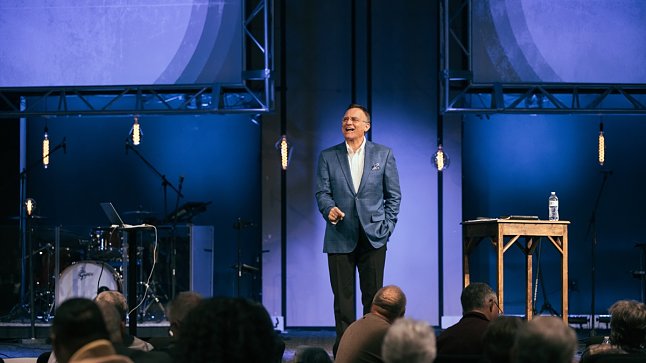Building A Culture of Prayer in Your Local Church

by Sarah Vaughn
Kie Bowman, senior pastor of Hyde Park Baptist Church in Austin, Texas spoke to pastors, laypeople and prayer leaders on the power of prayer and building up praying churches on Monday, January 27 at Geyer Springs Baptist Church during ECON 2020 Prayer Workshop.
He gave an encouraging message that prayer movements are happening all over the world. Bowman noted that “God is raising up praying churches. Hopefully, using them to usher in another Great Awakening.” To become a part of that movement, we need more cultures of prayer in today’s churches and Bowman taught leaders ways to ignite that flame within their congregations.
Your Personal Prayer Life Matters
Developing a dynamic personal prayer life is key to creating a culture of prayer in your church. How can you encourage others to encounter God in a personal way when you don’t do it yourself?
- Schedule a time every single day to talk with God. If you don’t schedule a time, other people will schedule your day for you.
- Find a place to talk to God, preferably secluded so you aren’t interrupted or distracted from your time with the Lord.
The distractions of your life, and everyone else’s life, are going to devour you without a committed time and place for the Lord.
Prayer is an important tool that many Christians take for granted. It’s evident in the Bible that the early church turned first to prayer. Bowman compared prayer to breathing, explaining that “just like breathing is essential to everything in our physical life, prayer is essential for everything in our spiritual life.”
Pastors Lead the Way
Bowman said that pastors are the leaders of the church. If you don’t have a desire to have a praying church, how do you expect your congregation to have that desire?
- The pulpit is the greatest area of ministry you have as a pastor. You set the tone standing on the stage. Communicate your vision to the congregation from there. Share personally what is in your heart. Whatever burns your soul will ignite the people around you.
- The word ‘prayer,’ in some form, appears in the Bible 500 times. Use that message. If God says something 500 times in the Bible, then it must be important!
- Use other leaders to lead in prayer. You can ignite the vision, but raising up other prayer leaders is important to establishing a praying culture. Not everyone is ready to lead in prayer, but everybody can pray, and everybody can be trained to lead in prayer. The flame just needs to be ignited and that starts with you.
The New Testament House of Prayer
Bowman posed the question, ‘Should the New Testament church be a house of prayer?’ He answered it by looking at the book of Acts. Everything that occurs in Acts happened on the way to a prayer meeting, at a prayer meeting or after a prayer meeting. Prayer was the first response to everything, and they did it as a community, together.
Bowman talked about ‘The Two Rooms of New Testament Prayer.’
- The Inner Room/Private Prayer is necessary for every believer. In Matthew 6:6 it says that “God will reward prayers done in secret.” Bowman called this the “Jesus model,” important for one’s personal prayer life, but not the model for the church.
- The Upper Room/Congregational Prayer is considered the “New Testament” prayer model. Acts 1:13-14 says that the apostles, “with one accord were devoting themselves to prayer,” including the women and Mary the mother of Jesus, and his brothers. They were praying as a congregation with one accord. Bowman says that this is the New Testament model for the church.
It’s what we call a modern-day ‘prayer meeting.’ This is the model for developing a praying church. Both models are equally important. You can’t do one without the other. You need both of them to function.
Prayer Can Change the World
It’s been noted throughout history that prayer meetings change the world. They may not all have been documented as prayer meetings, but plenty of revivals and movements have been started with prayer as the catalyst.
It doesn’t matter where you start with prayer, but it matters where you end. God can use you wherever you are to pray. It’s a simple tool with powerful, world-changing implications if we just utilize it and become passionate about it.